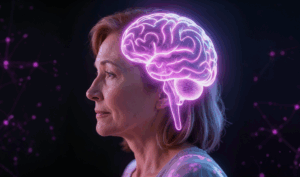The benefits of transcranial magnetic stimulation
At the Parsemus Foundation, we’re always looking for low-cost, non-invasive innovations that improve lives. One exciting area is brain stimulation for people with Alzheimer’s disease. Recent research suggests that a non-invasive technique called repetitive transcranial magnetic stimulation (rTMS) may slow cognitive decline in people with early Alzheimer’s.
rTMS uses magnetic pulses to target specific parts of the brain. It’s already in use for depression and is considered safe, well-tolerated, and relatively inexpensive. Now, scientists are exploring its potential for improving memory and thinking in Alzheimer’s patients.
Helping the brain rewire itself
A team led by Dr. Giacomo Koch, a neurologist at the Santa Lucia Foundation in Rome, has been studying this approach for years. Dr. Koch focuses on how non-invasive stimulation can help the brain rewire itself — a process known as neuroplasticity.
In a recent phase II clinical trial, Koch and his team tested rTMS on people with mild to moderate Alzheimer’s. The study used targeted stimulation on the precuneus, a key memory hub in the brain’s default mode network (DMN). The DMN is one of the first areas affected by Alzheimer’s.
Patients received daily rTMS for two weeks, followed by weekly sessions for nearly a year. The results, reported in MedPage Today, were encouraging. After 12 months, those who received real brain stimulation had less cognitive decline than those who got sham (placebo) treatment. They also maintained better daily function—a key goal in treating Alzheimer’s.
Even more encouraging: brain scans showed that rTMS boosted activity in memory-related networks. And the treatment was safe. Side effects were mild, such as headache or scalp discomfort.
Improving memory, attention, and language
“We are targeting synaptic dysfunction,” said Dr. Koch. “This is a core problem in Alzheimer’s. Magnetic stimulation may help restore brain communication.”
In December 2024, Dr. Koch led a comprehensive review published in the journal Brain. The review looked at over 20 randomized clinical trials using non-invasive brain stimulation for Alzheimer’s and mild cognitive impairment. It confirmed that rTMS — especially when combined with cognitive training — can improve memory, attention, and language. Another method, called transcranial electrical stimulation (tES), also showed promise, though results were more variable.
Promising, but more research is needed
Importantly, these treatments do not require surgery, hospitalization, or high-cost drugs. This makes them especially attractive as low-risk options for early intervention. However, experts agree that more research is needed to determine the best way to personalize these therapies.
The Parsemus Foundation believes that brain stimulation for Alzheimer’s could one day become a vital part of dementia care. It’s affordable, non-invasive, and — most importantly — it offers hope. While rTMS won’t cure Alzheimer’s, it may help people stay sharper, longer.
We’ll keep following the research and sharing updates on this promising frontier.
Read our web page on Alzheimer’s disease prevention, and see our other news articles on the topic.


